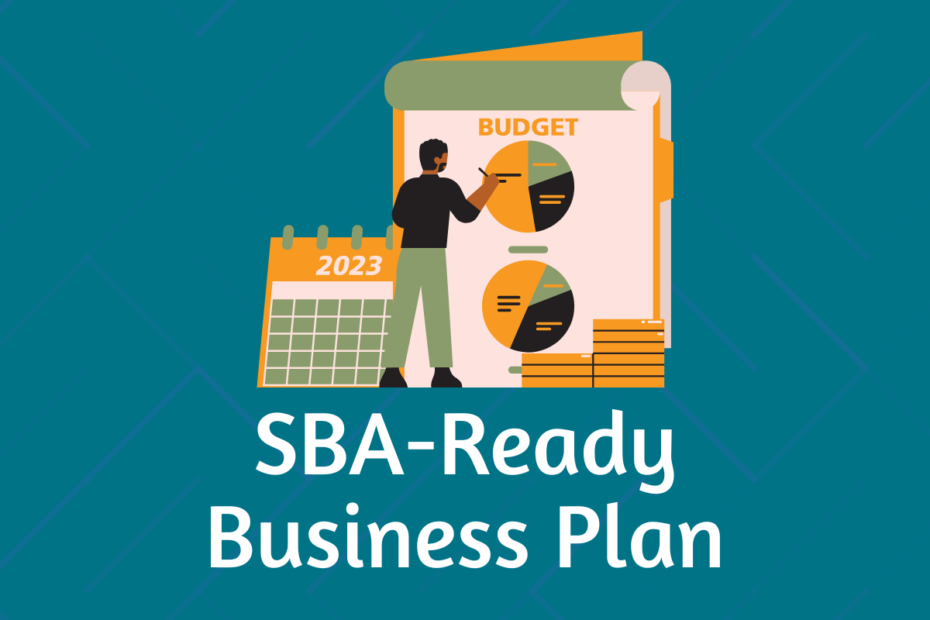Creating a successful business plan is essential for securing financing and guiding the growth of a small business. For entrepreneurs seeking funding from the U.S. Small Business Administration (SBA) or other financial institutions, it’s critical to understand the elements required to make a business plan “SBA-ready.” In this guide, we’ll walk through the steps to create a robust business plan that meets the standards of the SBA and positions your business for growth.
What is an SBA-Ready Business Plan?
An SBA-ready business plan is designed to meet the specifications and standards of the Small Business Administration. This type of plan should clearly articulate the business’s objectives, operations, market opportunities, and financial projections. Lenders use these details to evaluate the potential for profitability and the business’s capacity to repay loans.
Key Components of an SBA-Ready Business Plan
Creating a business plan that aligns with SBA guidelines involves the inclusion of several essential components, each serving to illustrate various facets of the business’s structure, market, and financial projections.
1. Executive Summary
The executive summary provides a concise overview of the business, summarizing its mission, the products or services offered, and the target market. It is critical that the executive summary captures the reader’s attention and provides a snapshot of the business’s purpose and potential.
2. Company Description
In this section, detail the business’s history, structure, and objectives. Discuss the following elements:
- Business Name: Official name and any DBA (Doing Business As) names.
- Legal Structure: State whether the business is a sole proprietorship, LLC, partnership, or corporation.
- Business Location: Address of the main office and any additional sites.
- Industry Overview: Briefly describe the industry and the business’s position within it.
- Goals and Objectives: Outline the company’s long-term vision and short-term goals.
3. Market Analysis
Understanding the market is critical to any business’s success. Use this section to provide a detailed analysis of the target market, competitors, and the industry landscape.
- Target Market: Define the target customer base in terms of demographics, geographic location, and buying behaviors.
- Market Size and Growth: Estimate the market size and growth potential, supporting claims with industry data.
- Competitive Analysis: Identify major competitors and analyze their strengths, weaknesses, and market positioning.
- Regulatory Landscape: Explain any regulations relevant to the business or industry.
4. Organization and Management Structure
For lenders, a well-defined organizational structure is essential. Highlight the team’s expertise, roles, and responsibilities.
- Organizational Chart: Use a chart to show how departments and roles are organized.
- Key Personnel: List the members of the management team, emphasizing their experience, qualifications, and roles.
- Hiring Plans: Include any future staffing needs and associated timelines.
5. Product Line or Services Offered
Describe the products or services offered, their benefits, and unique selling points (USPs). This section should help lenders understand the value proposition and how it differentiates from competitors.
- Product/Service Details: Explain what the business offers and why it is valuable to customers.
- Pricing Model: Outline the pricing strategy and how it meets market demands.
- Product Lifecycle: Describe the lifecycle of each product or service, including plans for future offerings.
6. Marketing and Sales Strategy
The SBA looks for a well-developed marketing and sales strategy that outlines how the business will attract and retain customers.
- Marketing Channels: Specify the channels (digital, social media, print, etc.) to reach the target audience.
- Sales Strategy: Describe the sales process and customer acquisition strategy.
- Advertising and Promotion: Outline promotional tactics and budget allocations.
- Customer Retention: Discuss plans to enhance customer loyalty and repeat business.
7. Funding Request
For businesses seeking SBA funding, this section is especially critical. Clearly define the amount of funding needed, along with its intended uses.
- Funding Amount: Specify the total amount of funding requested.
- Allocation of Funds: Break down how funds will be used for purposes such as equipment, inventory, payroll, or marketing.
- Future Funding Needs: Discuss any anticipated future funding needs and the reasons for additional capital.
8. Financial Projections
Lenders rely on financial forecasts to assess the business’s potential profitability and cash flow. This section should include:
- Revenue Projections: Provide projected revenue for at least three to five years.
- Cost and Expense Forecasts: Detail expected costs, broken down into categories such as materials, labor, and overhead.
- Cash Flow Statement: Estimate the inflows and outflows of cash to show liquidity.
- Profit and Loss Statement: Outline potential profit margins and operational expenses.
- Break-Even Analysis: Show the point at which the business will cover its costs and begin generating profit.
9. Appendix
The appendix provides additional documentation to support the business plan. Include:
- Resumes of Key Staff: Highlight relevant experience and skills of the management team.
- Legal Documents: Attach copies of any legal agreements, permits, or licenses.
- Product Photos or Schematics: If applicable, include visuals of products or prototypes.
- Market Research Data: Attach supporting data for market size, customer demographics, or competitor analysis.
Tips for Crafting a Winning SBA Business Plan
- Clarity and Conciseness: Use clear language and avoid jargon that may confuse lenders unfamiliar with the industry.
- Data-Driven Insights: Support statements with concrete data, whether from industry reports, customer surveys, or competitor analysis.
- Professional Presentation: Ensure the business plan is well-organized, visually appealing, and free of errors.
- Risk Analysis: Acknowledge potential risks and provide a risk mitigation strategy to demonstrate foresight and planning.
Creating an SBA-ready business plan involves understanding and effectively communicating all aspects of the business. This approach not only enhances the chances of securing funding but also establishes a clear roadmap for growth and operational success.
